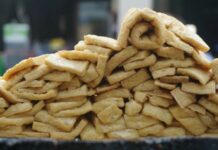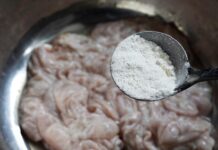Memory foam pillows have gained popularity for their softness and excellent support, providing users with a comfortable sleeping experience. Due to their unique material, different from cotton-filled pillows, cleaning memory foam pillows require special care and attention.
How to Clean a Memory Foam Pillow
Like any other pillow, memory foam pillows can accumulate dust, dirt, sweat, and bacteria over time, leading to an unpleasant odor and an increased risk of skin, scalp, and respiratory problems. Therefore, it is essential to know how to clean memory foam pillows properly to ensure they remain hygienic and safe to use.
To clean a memory foam pillow, you will need the following:
– Warm water at approximately 30 – 40 degrees Celsius
– Soap/ Laundry detergent
– Towel
– Soft-bristled brush
Steps to Clean a Memory Foam Pillow:
– Wash the pillowcase: You can remove the pillowcase and wash it separately by hand or in the washing machine, depending on the fabric.
– Clean the memory foam pillow core:
Mix a bucket of warm water with soap and soak the pillow core for about 10 minutes.
Gently squeeze the pillow core to remove dirt and excess water.
For stubborn stains, use a soft-bristled brush to scrub the affected areas.
Rinse the pillow core with clean water until all soap residue is removed.
If there are no significant stains, you can use a vacuum cleaner to remove dust from the air holes without washing it with water.
– Drying: Use a dry towel to absorb excess water from the pillow, then place it in a well-ventilated area, avoiding direct sunlight. When drying a memory foam pillow, do not hang or clip it, as this may cause deformation.
 Memory foam pillows are a favorite among consumers. (Photo: Istock)
Memory foam pillows are a favorite among consumers. (Photo: Istock)
Notes on Cleaning Memory Foam Pillows
To keep your memory foam pillow clean and intact, keep the following in mind:
Avoid washing memory foam pillows in the washing machine as prolonged soaking can reduce their lifespan.
Do not dry the pillow under direct sunlight, as it can cause the foam to harden or crack.
Use warm water: Maintain a water temperature below 40°C to protect the structure of the memory foam.
Store memory foam pillows in a cool, dry place, and minimize their exposure to water.
If the pillow’s surface becomes cracked or hardened, loses its elasticity, develops an unpleasant odor, or has stains that cannot be removed, it is advisable to replace it with a new one.
Benefits of Using a Memory Foam Pillow
Memory foam pillows are increasingly favored due to their numerous health benefits and diverse designs that cater to different needs. They offer natural antibacterial properties, resist dust accumulation, and are hypoallergenic, making them safe for the skin and overall health.
This type of pillow provides excellent breathability, ensuring a comfortable and cool sleeping environment without the feeling of heat or stuffiness.
Memory foam pillows are highly resilient and conform to the shape of the user’s head, providing superior sleep support.
According to VTC News
The Non-Stick Pan’s “Blacklisted”: This Alternative Cookware is Preferred Instead
The non-stick coating on a non-stick pan is highly susceptible to damage and peeling due to everyday use and improper handling. With regular use, the coating can start to break down, exposing the base metal and compromising the pan’s non-stick properties. This can lead to a sticky situation, literally, with food beginning to adhere to the surface and making cleanup a chore. Additionally, improper cleaning methods, such as using abrasive sponges or harsh chemicals, can expedite the deterioration process, leaving you with an uneven and ineffective cooking surface. It is crucial to understand the delicate nature of non-stick coatings to extend the lifespan of your cookware and maintain its performance.



































